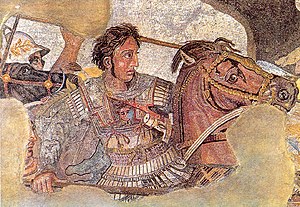This:

Sorry. That was wrong. There's nothing natural about Michael Jackson.
This, however:

Today we talk about something that has done more damage to the Midwest than the Dustbowl and George W. Bush COMBINED:
The Tornado: Know Your Enemy
I hear you saying, "But Rick, Sun Tzu always said the more you know about the enemy, the more likely you are to win in battle against them. How can I come to know enough about tornadoes to ride my cavalry into it and chase it from my farmland?"
Well, I'm here to help the struggling 1400s Chinese aristocracy.
A tornado is defined by the Glossary of Meteorology as:
Cumuliform is a fancy way of saying a cloud that develops on a vertical axis. Cumulus clouds are the big puffy clouds that tower over you and sometimes rain ice and deadly vortexes down on our puny mortal lives.
They form from a class of thunderstorm called Supercell.

These terrifying storms are the most dangerous. They can last for hours and include hail, torrential rain and, of course, our friends, the tornado.
The central feature of the supercell is the rotation of the winds within it, called the mesocyclone. Wind hits the top of the cloud, starting movement within the cloud, while an updraft tilts the spinning wind into a vertical axis, causing the formation of the mesocyclone. This mesocyclone is the source of the tornado.
Rain drags air down with it towards the back of the supercell, creating something called the Rear Flank Downdraft. It accelerates as it approaches the ground and drags the mesocyclone within the supercell down with it. With enough moist, warm air, the mesocyclone forms a funnel that develops into a tornado. Eventually, the downdraft cuts off the air supply for the tornado and the tornado disappates.
And blah blah blah. Let's go the way of Fox News and stop concentrating on education and facts and start talking about the GOOD STUFF.
World's Deadliest Tornado: Bangladesh, 1989
On April 26th, 1989, the people of Saturia and Manikgank sadar were calmly going about their Bangladeshian lives, doing their Bangladeshian things, praying to their pagan Bangladeshian Gods. Unfortunately, Mother Nature must have been on her period that day, because she rained down total bitch upon the simple Bangladeshians.
A tornado decended, reportedly 1 mile long, decimating the two towns and killing an estimated 1300 people. That number was eventually tuned down to at least 600 confirmed
Where it matters: Deadliest US Tornado
On March 18, 1925, the people of Missouri, Illinois and Indiana were calmly going about their noble American lives, worshipping their proper Christian Gods...when all of a sudden, an enormous tornado, probably planned by the Huns, came crashing down upon their strong American backs.
There is some controversy (there is so little in meteorology...let them have this one) over whether or not it was actually one tornado or a family of tornados spawning from one supercell, but that's got nothing to do with death toll.
According to the Tornado Project (which certainly knows why people come to a site called tornado project), the tornado touched down in Missouri with more limited destruction, destroying mining towns and killing a few farmers. Then, growing bold, it mosied into Illinois, destroying the town of Gorham and killing almost three hundred in Murphysboro. The tornado powered on to Indiana, destroying small towns and erradicating half of Princeton (which, if Princeton,NJ is any gauge, probably deserved it).
Death toll: 695 confirmed
Damage: $16,500,000 (Note, that for five dollars in 1925, you could buy your own farm, send three kids to college and retire young. This may be an exaggeration.)
Final Note
I hope you learned something today.
I learned that Tornados are pretty dangerous.
Then again. 4,000 troops have died in Iraq. 1,527 people died in 9/11. And something in the realm of one million civilians have died throughout the Iraq engagement.
So. I learned Mother Nature is a huge bitch. But we're bitchier.
USA! USA! USA!









